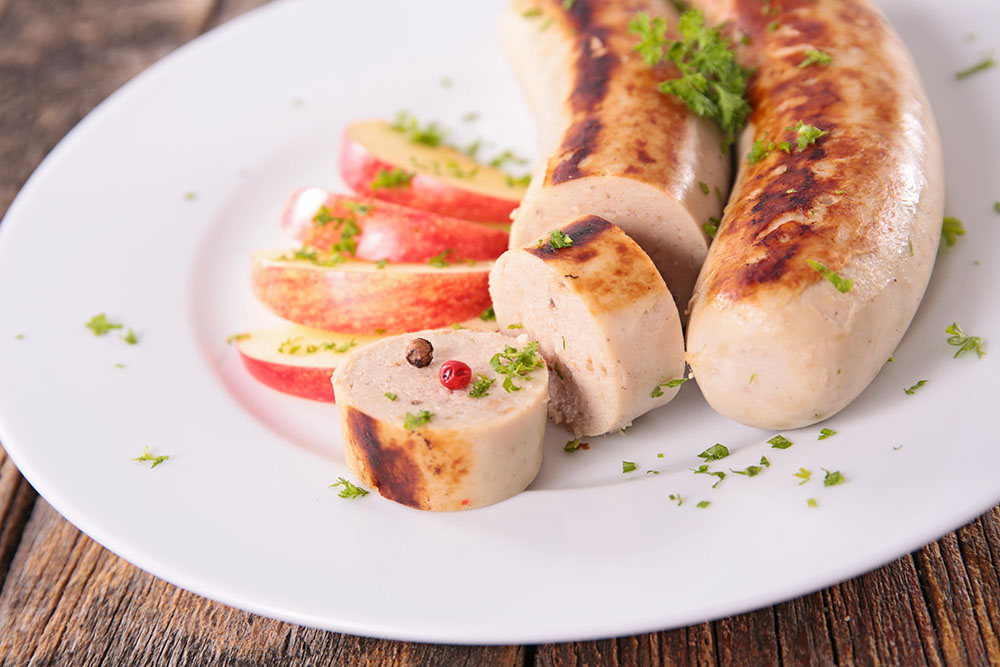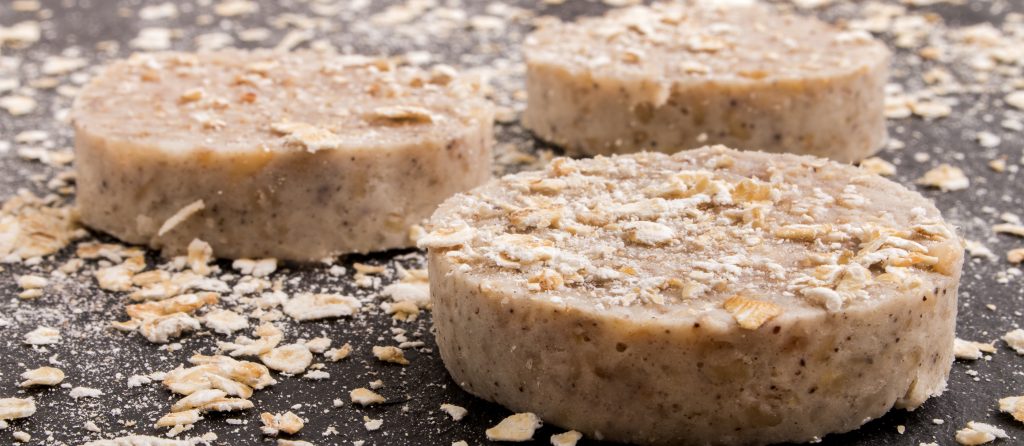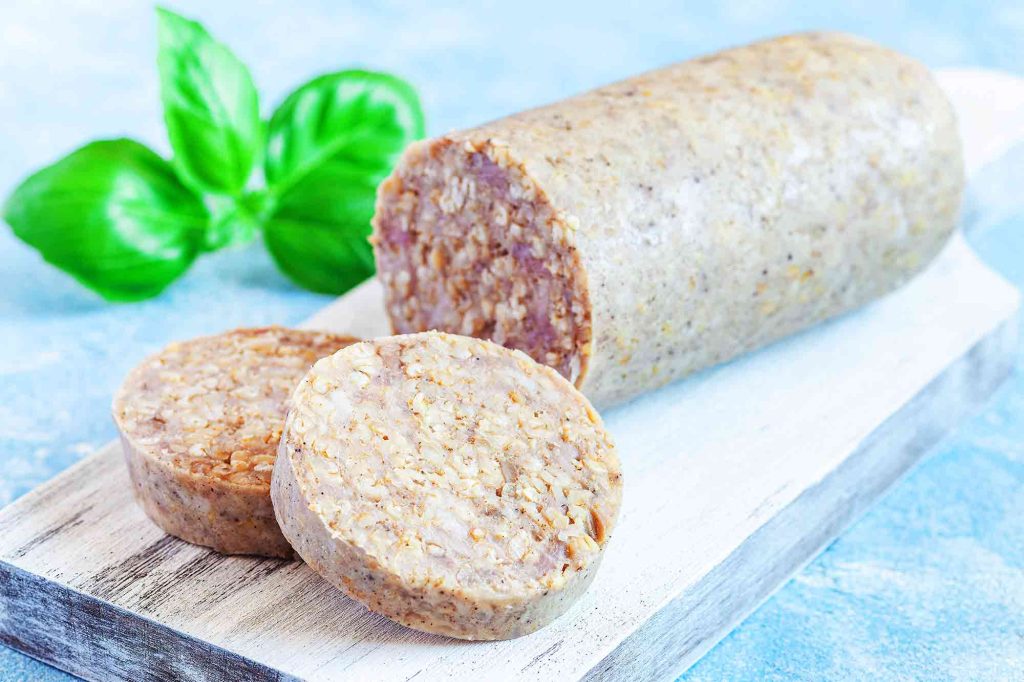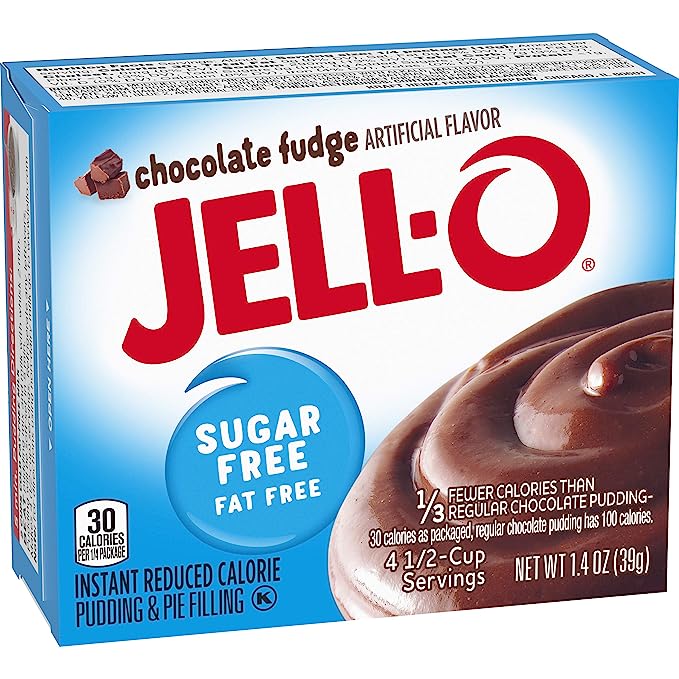White Pudding: A Delightful Twist to Traditional Recipes

Introduction: The Appeal of White Pudding
When it comes to indulging in hearty and flavorful dishes, white pudding stands out as a delightful delicacy. This lesser-known cousin of black pudding is a versatile and delicious addition to breakfast and dinner tables alike. With its creamy texture and savory taste, white pudding adds a unique twist to traditional recipes. In this article, we will explore the history, ingredients, recipes, and health benefits of white pudding, as well as answer some common questions about this delectable treat.
A Brief History of White Pudding
White pudding traces its origins back to ancient times when people sought to make the most of the ingredients available to them. This delectable dish evolved from traditional blood sausage recipes, with the key difference being the absence of blood as an ingredient. Instead, white pudding primarily consists of a combination of suet, oats, onions, and spices, resulting in a flavorful and satisfying treat. Over the centuries, white pudding has become a beloved delicacy in various cuisines, including Scottish, Irish, and English.
Ingredients Used in White Pudding
To create the distinct flavor and texture of white pudding, a blend of simple yet flavorful ingredients is required. The traditional white pudding recipe typically includes the following:
- Suet: Suet, the solid fat from around the kidneys of beef or mutton, serves as the base ingredient in white pudding. It provides richness and contributes to the creamy texture.
- Oats: Rolled oats are a crucial component of white pudding, adding texture and substance to the dish.
- Onions: Finely chopped onions are sautéed and incorporated into the mixture, enhancing the overall flavor profile.
- Spices: A blend of spices, such as black pepper, salt, nutmeg, and mace, is added to season the white pudding and create a well-balanced taste.
Traditional White Pudding Recipe
Here is a classic recipe for white pudding:
Ingredients:
- 1 cup suet
- 1 cup rolled oats
- 1 onion, finely chopped
- 1 teaspoon salt
- ½ teaspoon black pepper
- ½ teaspoon nutmeg
- ½ teaspoon mace
Instructions:
- In a mixing bowl, combine the suet, rolled oats, chopped onion, salt, black pepper, nutmeg, and mace. Mix well until all the ingredients are evenly distributed.
- Shape the mixture into small round patties or stuff into casings for a more traditional presentation.
- Heat a skillet over medium heat and add a small amount of oil or butter.
- Cook the white pudding patties or casings for about 10-12 minutes, flipping them occasionally, until they turn golden brown and crispy on the outside.
- Serve hot and enjoy!
Variations of White Pudding
While the traditional white pudding recipe is undeniably delicious, various regional variations add their own unique twist to this culinary delight. Some popular variations include:
- Vegetarian White Pudding: For those following a vegetarian or vegan lifestyle, white pudding can be prepared without suet, substituting it with plant-based fats or oils.
- Spiced White Pudding: By experimenting with additional spices, such as cinnamon, ginger, or cloves, you can infuse your white pudding with new and exciting flavors.
- Seafood White Pudding: In coastal regions, white pudding may incorporate seafood elements like shrimp, crab, or smoked fish, offering a delightful taste of the ocean.
White Pudding vs. Black Pudding: What’s the Difference?
White pudding and black pudding are often mentioned together due to their shared origins. However, they differ significantly in terms of ingredients and preparation. While black pudding incorporates blood as a key component, white pudding replaces it with suet and oats. This substitution results in a milder flavor profile, making white pudding a popular choice for those who prefer a less assertive taste. Additionally, black pudding tends to have a darker color due to the presence of blood, while white pudding maintains a lighter appearance.
How to Serve and Enjoy White Pudding
White pudding can be enjoyed in various ways, making it a versatile addition to any meal. Here are a few serving suggestions:
- Breakfast Delight: Serve white pudding alongside a traditional breakfast spread, including eggs, bacon, grilled tomatoes, and toast. Its creamy texture and savory taste complement the other components perfectly.
- Savory Stuffing: Incorporate white pudding into stuffing recipes for roasted meats or poultry. Its rich flavors enhance the overall taste and add a delightful twist to the dish.
- Sautéed Delicacy: Sauté white pudding with onions, mushrooms, and herbs for a flavorful side dish that pairs well with roasted or grilled meats.
Health Benefits of White Pudding
While white pudding is undeniably delicious, it’s important to consider its nutritional aspects. Here are a few potential health benefits:
- Protein Source: White pudding contains high-quality protein from suet and oats, which is essential for muscle growth and repair.
- Nutrient-Rich: The combination of suet, oats, and onions provides vitamins, minerals, and dietary fiber, contributing to overall well-being.
- Sustaining Energy: The inclusion of oats in white pudding offers complex carbohydrates, providing a slow release of energy and promoting satiety.
FAQs about White Pudding
- Is white pudding suitable for vegetarians?
- Traditional white pudding contains suet, which is derived from animal fat. However, vegetarian alternatives are available, allowing individuals to enjoy a meat-free version.
- Can white pudding be frozen?
- Yes, white pudding can be frozen for later use. Ensure it is wrapped tightly to prevent freezer burn and thaw it thoroughly before cooking.
- What is the shelf life of white pudding?
- White pudding, when stored properly in a cool and dry place, can typically be kept for several weeks. However, it is best to check the packaging or consult local guidelines for specific storage recommendations.
- Can I substitute suet with another fat?
- Yes, if suet is not readily available, you can use alternatives like vegetable shortening or butter. However, note that this may affect the taste and texture of the white pudding.
- Is white pudding gluten-free?
- Traditional white pudding contains oats, which may come into contact with gluten during processing. For individuals with gluten sensitivities or celiac disease, it is advisable to choose certified gluten-free oats or opt for gluten-free white pudding alternatives.
Conclusion
White pudding offers a delightful twist to traditional recipes, infusing them with its creamy texture and savory flavors. Whether enjoyed for breakfast, as part of a main course, or as a side dish, white pudding never fails to impress. With its rich history, versatile variations, and potential health benefits, this culinary gem continues to captivate food enthusiasts worldwide. So, why not embark on a culinary adventure and savor the unique delights of white pudding?
Black and White Pudding Recipe: A Delicious and Traditional Dish
Are you looking for a unique and flavorful dish to impress your guests? Look no further than the black and white pudding recipe. This traditional dish hails from Ireland and is known for its rich and savory flavors. In this article, we will take you through the step-by-step process of preparing this delectable dish. So, put on your chef’s hat and let’s get started!

1. Introduction: The Origins of Black and White Pudding
Black and white pudding is a traditional Irish dish that dates back centuries. It is a type of sausage made using pork meat, fat, and a combination of oatmeal, barley, or breadcrumbs. The black pudding gets its distinct dark color from the addition of blood, usually from a pig or a cow. The white pudding, on the other hand, does not contain blood and has a lighter appearance.
2. Ingredients Required for Black and White Pudding
To make black and white pudding, you will need the following ingredients:
- 1 pound of pork meat
- 1/2 pound of pork fat
- 1 cup of oatmeal
- 1/2 cup of barley
- 1/4 cup of breadcrumbs
- 1/4 cup of pork blood (for black pudding)
- 1 onion, finely chopped
- 1 teaspoon of salt
- 1/2 teaspoon of black pepper
- 1/2 teaspoon of ground nutmeg
- 1/2 teaspoon of ground allspice
- Natural sausage casings
3. Preparation: Cooking the Black Pudding
- In a large mixing bowl, combine the pork meat, pork fat, oatmeal, barley, breadcrumbs, chopped onion, salt, black pepper, nutmeg, and allspice.
- If using pork blood, add it to the mixture and mix well until all the ingredients are evenly combined.
- Carefully stuff the mixture into natural sausage casings, ensuring they are tightly packed.
- In a large pot, bring water to a gentle simmer. Place the sausages in the pot and cook for approximately 45 minutes, or until the sausages are firm and cooked through.
- Once cooked, remove the sausages from the pot and let them cool for a few minutes.
- Slice the black pudding into thick rounds and serve warm.
4. Preparation: Cooking the White Pudding
- Follow steps 1 and 2 from the black pudding recipe to prepare the base mixture.
- Skip the addition of pork blood in this recipe.
- Stuff the mixture into natural sausage casings, similar to the black pudding.
- In a large pot, bring water to a gentle simmer. Place the sausages in the pot and cook for approximately 30 minutes, or until firm and cooked through.
- Once cooked, remove the sausages from the pot and let them cool for a few minutes.
- Slice the white pudding into thick rounds and serve alongside the black pudding.
5. Serving Suggestions and Pairings
Black and white pudding is commonly served as part of a traditional Irish breakfast. It pairs well with other breakfast items such as fried eggs, bacon, sautéed mushrooms, grilled tomatoes, and toast. The combination of flavors from the savory pudding, crispy bacon, and perfectly cooked eggs creates a satisfying and hearty meal.
Additionally, black and white pudding can be enjoyed as an appetizer or as an ingredient in various dishes. Slices of the pudding can be pan-fried until crispy and served with a side of applesauce or a tangy mustard dip for a delightful snack. The rich and robust flavors of the pudding also make it a great addition to salads or as a filling for stuffed mushrooms.
6. Health Benefits of Black and White Pudding
While black and white pudding may not be the healthiest dish, it does offer some nutritional benefits. Pork meat is a good source of protein, vitamins, and minerals. Oatmeal, barley, and breadcrumbs provide fiber and contribute to the overall texture of the pudding. However, due to the high-fat content, it is best to consume black and white pudding in moderation as part of a balanced diet.
7. Tips and Variations for the Perfect Pudding
- Ensure that the sausages are tightly packed to prevent them from bursting during cooking.
- Experiment with different seasonings to personalize the flavor profile of your pudding. Some popular additions include thyme, sage, or a hint of chili.
- If you prefer a smoother texture, you can blend the mixture before stuffing it into casings.
- Consider adding diced apples or raisins for a touch of sweetness and added texture.
- Vegetarian variations of black pudding can be made using ingredients like mushrooms, lentils, or beans.
Frequently Asked Questions (FAQs)
- Can I freeze black and white pudding?
- Yes, you can freeze cooked black and white pudding. Wrap the slices tightly in plastic wrap or place them in an airtight container before freezing. Thaw in the refrigerator before reheating.
- How long does black and white pudding last in the refrigerator?
- Black and white pudding can be refrigerated for up to 3-4 days. Ensure it is stored in a sealed container to maintain freshness.
- Can I use artificial casings instead of natural casings?
- Yes, artificial casings can be used as an alternative to natural casings. They are readily available and can be found in most specialty food stores.
- Is black and white pudding gluten-free?
- No, black and white pudding typically contains oatmeal, barley, or breadcrumbs, which are not gluten-free. If you have dietary restrictions, look for gluten-free alternatives for these ingredients.
- Can I substitute the pork meat with another type of meat?
- While pork is the traditional choice, you can experiment with other meats such as beef or lamb. However, keep in mind that this will alter the flavor profile of the pudding.
Conclusion
In conclusion, the black and white pudding recipe is a delicious and traditional Irish dish that will delight your taste buds. With its rich flavors and unique texture, this dish is sure to impress your guests or provide a special treat for yourself. So, why not give it a try and savor the taste of this classic culinary delight?
Black and White Pudding Ingredients: A Savory Delight for Food Enthusiasts
When it comes to indulging in unique and flavorful dishes, black and white pudding is a standout choice. These traditional European delicacies have been enjoyed for centuries and continue to captivate the taste buds of food enthusiasts worldwide. In this article, we will explore the ingredients that make up black and white pudding, highlighting their distinctive flavors and the culinary traditions that surround them.

The Origin of Black and White Pudding
Black and white pudding have their roots deeply embedded in the culinary traditions of Europe. Black pudding, also known as blood pudding, traces its origins back to ancient times when it was consumed by various civilizations, including the Romans and the Greeks. White pudding, on the other hand, emerged as a regional variation, with Ireland and Scotland being particularly renowned for their recipes.
Understanding Black Pudding Ingredients
Black pudding derives its unique flavor and texture from a combination of carefully selected ingredients. The primary components include:
- Blood: Traditionally, black pudding is made with animal blood, such as pig or cow blood, which serves as the main ingredient. The blood provides a rich and distinct flavor.
- Grains or Oats: To enhance the texture and bind the ingredients together, grains or oats are commonly added. These also add a subtle nuttiness to the overall taste.
- Onion: Onion acts as a flavor enhancer, adding depth and a savory note to the black pudding. It complements the richness of the blood and balances the flavors.
- Herbs and Spices: Various herbs and spices are used to season the black pudding, such as thyme, marjoram, black pepper, and nutmeg. These ingredients contribute to the unique aroma and taste profile.
The Essence of White Pudding Ingredients
While black pudding takes center stage with its distinctive blood-based composition, white pudding offers a milder and equally delightful taste. The key ingredients found in white pudding are:
- Oatmeal: Unlike black pudding, white pudding is typically made with oatmeal as its main ingredient. This imparts a smooth and delicate texture to the pudding.
- Pork: White pudding commonly incorporates ground pork, which adds a subtle richness to the flavor. It complements the oatmeal and other ingredients, creating a harmonious blend.
- Seasonings: White pudding is seasoned with a variety of herbs and spices, including salt, pepper, and nutmeg. These ingredients enhance the overall taste profile, making each bite a pleasure.
Traditional Cooking Techniques
Both black and white pudding can be prepared using various cooking methods, including boiling, frying, or baking. Boiling is the most common technique, where the puddings are gently simmered in water until cooked to perfection. Frying provides a crispy outer layer, adding an extra dimension of texture to the pudding. Baking is another option, allowing the flavors to meld together while achieving a slightly different consistency.
Pairing Black and White Pudding with Other Dishes
Black and white pudding can be enjoyed in numerous ways, whether as a star ingredient or as a complementary element in a dish. Here are some popular pairings:
- Traditional Breakfast: In the UK and Ireland, black and white pudding are commonly served alongside a hearty breakfast that includes bacon, eggs, sausages, and grilled tomatoes.
- Tapas and Appetizers: Slices of black and white pudding can be pan-fried and served as tapas or appetizers, often paired with tangy sauces or chutneys for a burst of flavor.
- Stews and Casseroles: Adding black or white pudding to stews and casseroles can infuse them with a unique richness and depth, creating a satisfying and flavorful dish.
Variations of Black and White Pudding Across Different Cultures
While black and white pudding have strong ties to European cuisine, variations of these beloved puddings can be found in other cultures as well. For instance:
- Morcilla: Popular in Spanish cuisine, morcilla is a type of black pudding made with rice, onions, and spices, creating a distinct flavor profile.
- Boudin Noir: This French version of black pudding often incorporates apples or chestnuts, offering a delightful combination of sweet and savory flavors.
- Kaszanka: A Polish variety of black pudding, kaszanka contains buckwheat, barley, and onions, resulting in a slightly grainier texture and a robust taste.
Health Considerations
Black and white pudding are nutrient-dense foods, providing essential minerals and vitamins. However, due to their high-fat content, they should be enjoyed in moderation as part of a balanced diet. It’s important to consider individual dietary needs and consult with a healthcare professional if necessary.
Tips for Cooking Perfect Black and White Pudding
To ensure the best results when cooking black and white pudding, here are some tips to keep in mind:
- Quality Ingredients: Start with fresh and high-quality ingredients to enhance the overall flavor and texture of the puddings.
- Balanced Seasoning: Pay attention to the seasoning and ensure a harmonious balance of flavors. Taste the mixture before cooking and adjust as needed.
- Cooking Time: Follow the recommended cooking time for the specific recipe or product you’re using. Overcooking can result in a dry and crumbly texture.
- Serving Suggestions: Experiment with different accompaniments and pairings to discover your preferred way of enjoying black and white pudding.
Conclusion
Black and white pudding bring a unique and savory experience to the culinary world. With their rich history and distinct flavors, these traditional European delicacies continue to captivate food enthusiasts worldwide. Whether you prefer the boldness of black pudding or the delicate taste of white pudding, these ingredients offer a delightful journey for the taste buds. So, explore the diverse recipes and cooking techniques, and savor the flavors that have stood the test of time.
Frequently Asked Questions (FAQs)
- What is the main difference between black and white pudding? Black pudding is primarily made with blood and grains/oats, while white pudding is made with oatmeal and pork.
- Can black and white pudding be enjoyed by vegetarians? Traditional black and white pudding contain animal-derived ingredients, so they are not suitable for vegetarians. However, vegetarian alternatives exist that mimic the flavors and textures of the original puddings.
- Are there any gluten-free options for black and white pudding? Yes, some manufacturers produce gluten-free versions of black and white pudding. Check the product labels or search for specific gluten-free recipes.
- Can black and white pudding be frozen for later use? Yes, both black and white pudding can be frozen. Wrap them tightly in plastic wrap or place in an airtight container before freezing.
- How long does black and white pudding stay fresh? When properly stored in the refrigerator, black and white pudding can stay fresh for about 3-5 days. Check the packaging or recipe instructions for specific guidelines.

